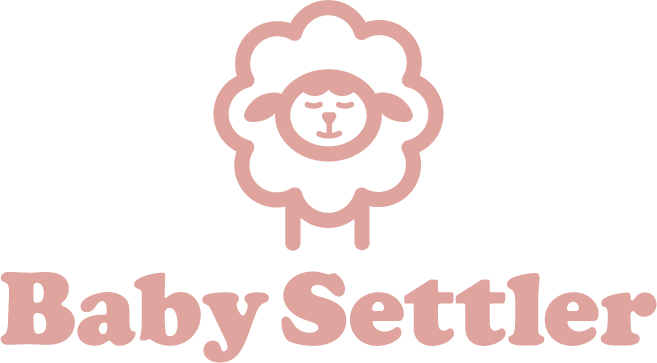
The “Dream Feed” : A Frequently Debated Topic Among Infant Sleep Consultants
At Baby Settler, we are not on board with the “Dream Feed”…but let me explain why so you can decide if you are “on board” with it! Because the truth is, you know your baby better than anyone and you are best positioned to decide what will or won’t work for you and your baby. You just need access to information and to gain an understanding of the “Why” and then you can feel confident moving forward with your decision.
So, what is a dream feed? A dream feed is when you feed your baby without waking him. Wait, what? Yeah, you read that right. You pick your baby up while he’s asleep and feed him without waking him. The goal for the dream feed is that your baby won’t fully wake up, and you’ll get a longer stretch of sleep.
As a Lactation Consultant and feeding specialist, here’s why I don’t like the Dream Feed:
With a dream feed, babies are woken from a deep sleep and offered a feed. In this situation, most babies are barely awake. That’s really the “point” of the dream feed. The baby might suck at the bottle or breast and appear to be eating, but it’s likely more of a non-nutritive suck (think pacifier) and not a coordinated, rhythmic feed.
Why does this matter?
There are a few reasons why this matters.
1. Quality feeds lead to quality sleep. For example: If your baby has a “cough” episode with this feed (because they are asleep) this can lead to an uncomfortable baby after the feed.
2. It’s likely not a full efficient feed. Your baby most likely had a little “snack.” This means your baby will probably still be waking up shortly after this feed to fill the rest of their belly.
3. It’s not infant driven. The dream feed is initiated by you, not your baby. We believe in infant driven feeding as the most effective, efficient method for quality feeds that lead to quality sleep.
If uninterrupted nighttime sleep is your goal, I don’t recommend doing a dream feed to get there.
Why? The practice doesn’t follow infant-driven feeding, and honestly, it goes against the Baby Settler method.
Maybe it works for some babies, but I can tell you from experience (working with over 2000 babies to date), it does not work for most babies.
Let’s break this down:
The ultimate goal is that your baby starts taking in all the breastmilk or formula he needs during daytime hours. In order to set him up to do that, we ensure efficient, effective feeds. That’s what the Baby Settler method is all about.
If babies have access to the volume they need during the day (mom doesn’t have a milk supply issue and we are optimizing bottles), then we don’t purposely want to force volume at night. The more breast milk or formula a baby takes overnight, the less a baby will take during the day. There is a certain volume (based on a baby’s weight) that he needs in 24 hours. This is a moving target during the first 3 months (up to 12 pounds). At 12 pounds, most babies will consume between 24 to 36 ounces in a 24-hour period until they reach their first birthday.
Back to the dream feed.
Let’s look at this example:
Porter’s anchor feed is at 7 a.m., and his last feed before he’s down for the night (in his optimal sleep environment) starts around 6:30 p.m. During this time, he gets 6 daytime feeds, mostly breastfeeding. He has been waking up between 2 and 3 a.m. each night. His mom wants to try and dream feed before she goes to bed (around 11 p.m.) to see if she can get him to make it closer to 6 a.m. before he needs a feed. She decides she’s going to pump and give a bottle of pumped milk, so she knows exactly how much he takes.
It’s 11 p.m., so Porter’s mom goes into his nursery to get him. She doesn’t change his diaper or do anything to wake him up. He’s asleep. She gets him to latch onto the bottle, and he starts sucking, but he’s spilling milk and it’s taking forever for him to feed. The bottle has 4 ounces in it, but after 20 minutes he only drank 2 ounces. She tries to encourage him to take a little more, but he won’t. She burps him and lays him back down in his crib and leaves the room.
Around 2 a.m. Porter is up. His mom wasn’t expecting that. He had been sleeping from 7:30 to 2:30, which was 7 hours. She thought he would sleep 7 hours from the dream feed, which would mean he’d wake up around 6 a.m. But it’s only been 3 hours since his last feed. She breastfeeds him. He is obviously hungry, but her breasts feel fuller than they usually do after their 2 a.m. feed. She puts him back in his crib and he drifts off to sleep.
It’s 5 a.m. and Porter is up again. What the heck! He usually sleeps until 7. Why is he up again? Porter’s mom goes in to feed him, and he eats like he’s starving. Then he drifts off to sleep. She puts him back in his crib.
Now it’s 7 a.m., and he’s supposed to start his anchor feed. But he’s asleep. Porter’s mom wakes him up so he can feed, but he’s really hard to wake up. He nurses a little bit, but it’s more of a snack. He isn’t taking a full feeding like he usually does at this time.
An hour later, Porter’s mom puts him down for his first morning nap, and he’s not having it! It surprises her because he usually goes down for this nap so easily. After 30 minutes of crying, she finally realizes that he might be hungry because he really only had a snack for his anchor feed. She decides to offer him another feed, and he is obviously hungry. He empties her breasts and goes down for his morning nap without any protest.
Wow, what a process.
I hear stories like this all the time. Moms offer a dream feed, thinking it’ll get them more sleep, but it really interrupts sleep. A small feed leads to another small feed that leads to another small feed, and this all leads to interrupted sleep.
If this scenario sounds familiar, drop that dream feed, trust me!
You can read more about building those foundations in our book, Babies Made Simple. Or, if you’re looking the for step-by-step process that walks you through the in’s and outs of this feed-sleep connection, our Babies Made Simple on-demand guide is for you!
In Your Corner,
Hillary- The Baby Settler

Baby Settler participates in various affiliate marketing programs, which means we may get paid commissions on editorially chosen products purchased through our links to retailer sites.
Our editorial content is not influenced by advertisers or affiliate partnerships. We only recommend products and services we genuinely believe will add value to our readers.
When you make a purchase through the links on our site, we may earn a commission from the affiliate partners. This helps us to continue providing high-quality content for free to our readers and maintain our website.
Thank you for supporting Baby Settler!




